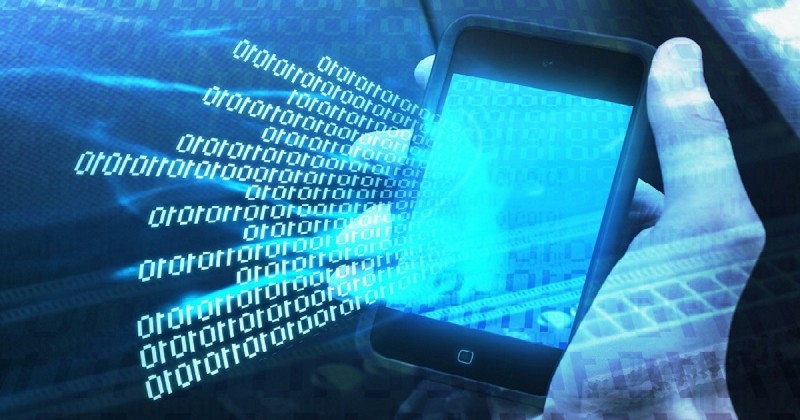Technostress: the new psychopathology of the "digital age".

New technologies also bring us some problems for mental health.
The irruption into our lives of technology in the form of computers, internet, smartphones, tablets... has caused social, cultural and economic changes that have affected many individuals. No one can doubt the benefits of technology, and its use can be very useful because it allows us to be constantly connected with almost every corner of the planet. New technologies provide us with new channels of relationship and communication and facilitate access to information in record time, as well as providing us with new leisure opportunities.
But it's not all so rosy: experts have been warning us for decades about the risks of misusing technology.. For the past two decades, psychologists have been naming new disorders that have emerged in the "information age" (also called the digital age o computer age), such as the FOMO Syndrome, Nomophobia and Technostress. We are going to talk about the latter in today's article.
What is technostress?
The concept of technostress is directly related to the negative effects of the use of technology.
It was baptized by the American psychiatrist Craig Brod in 1984 in his book Technostress: The Human Cost of the Computer Revolutionwho first defined this phenomenon as "an adaptive illness caused by a lack of ability to deal with new computer technologies in a healthy way".
In 1997 the word technostress became popular thanks to a book by Larry Rosen and Michelle Well called Technostress: Coping with Technology @Work @Home @Play. The authors define technostress as "any negative impact (direct and/or indirect) of technology on an individual's attitudes, thoughts, behaviors or body physiology". For them, the most common and documented form of this phenomenon is information overload, known as infoxication.
But both definitions were unspecific until Marisa Salanova, professor of psychology at the University Jaume I of Castellón, defined technostress as follows: "Technostress is a negative psychological state that is related to the use of information and communication technologies or the threat of their use in the future. This state is conditioned by the perception of a mismatch between the demands and resources related to the use of ICTs that causes a high level of psychophysiological activation, discomfort and the development of negative attitudes towards ICTs".
Technostress is a problem for businesses
Although technostress affects all areas of life, it is in the workplace that the most attention has been paid to this phenomenon, in the workplace, it is in the workplace that the most attention has been paid to this phenomenon.. Salanova's vision of technostress is related to the "demands-resources" paradigm that has dominated the organizational landscape in recent decades. It is in the world of work, and specifically in occupational risk prevention departments, where this phenomenon is beginning to be taken seriously.
Being connected to the computer all day at work, looking at the cell phone every 5 minutes, getting home and still connected to the tablet while watching TV.... sound familiar? If you feel identified, you are not the only one: we spend 24 hours a day hooked to new technologies..
This situation is what causes techno-stress, and according to a recent study by the UOC (Universitat Oberta de Catalunya) techno-stress "will become a new occupational hazard, as the new ways of working (such as teleworking) and the omnipresence caused by Information and Communication Technologies (ICT) can give rise to feelings of incapacity, lag or addiction"..
Antonio Cano, president of the Spanish Society for the Study of Anxiety and Stress (SEAS) insists that the (SEAS) insists that individuals must be educated, as the misuse of ICTs can generate problems such as nervousness and anxiety.
According to data collected by the National Working Conditions Survey which was carried out in 2011, 25% of workers feel overwhelmed by their work. Mainly, this discomfort is caused by a fast pace of work, with pressure on deadlines and the simultaneous management of tasks, all factors related to new technologies.factors related to new technologies. The workers most exposed to technological change, information overload and speed (workers in sectors such as communication, finance, administration or science and technology) suffer the most from technostress.
Types of technostress
As with stress, technostress is a complex phenomenon with different symptoms. According to the Spanish National Institute for Safety and Health at Work, there are different types of technostress. there are different types of technostress. We explain them below.
1. Techno-anxiety
The technoanxiety is the most common type of technostress. The person who suffers from it usually experiences high levels of physiological activation that causes discomfort. Tension and unpleasantness is a characteristic feature of the present and future use of new technologies.
Some individuals develop an irrational fear of new technologies, which is known as technophobia. Symptoms of technophobia are: avoidance of technology (including avoidance of talking about it), anxiety in the presence of technology, and hostile and aggressive thoughts towards technology.
2. Technofatigue
The technofatigue is similar to burnout syndrome, as it is characterized by negative feelings such as fatigue, mental exhaustion or cognitive exhaustion due to the continued use of new technologies. It can also manifest itself with skeptical attitudes and beliefs of ineffectiveness in the use of ICTs.
Some authors speak of a specific type of technofatigue: information fatigue syndrome. information fatigue. This is the result of excessive exposure, consumption and management of information.
3. Technoaddiction
The technoaddiction is characterized by the uncontrollable desire to be connected to ICTs at all times. This behavior causes discomfort and deterioration in the individual's life.
(Updated at Apr 14 / 2024)